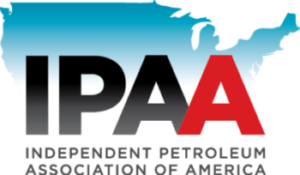Nov 15, 2016 Independents Challenge BLM’s Venting and Flaring Rule
DENVER – Western Energy Alliance and the Independent Petroleum Association of America (IPAA) filed a lawsuit today challenging Bureau of Land Management’s (BLM) final rule regulating venting and flaring from oil and natural gas operations on federal and tribal lands. In its claim filed before the U.S. District Court in Wyoming, the trade associations call BLM’s rule a broad new air quality regime that goes beyond authority granted by Congress. The trades are represented by Eric Waeckerlin and Kathleen Schroder of Davis Graham & Stubbs.
When operating on public lands, businesses already comply with air quality regulations mandated by the Environmental Protection Agency (EPA). BLM’s venting and flaring rule creates duplicative regulation that conflicts with EPA requirements. Authority to regulate air quality was designated to the EPA under the Clean Air Act, yet, BLM has tried to assume this role under the guise of reducing waste from oil and natural gas production.
“BLM lacks statutory authority for the creation of an air quality regulatory program, which has resided with EPA and the states since the 1970’s,” said Kathleen Sgamma, vice president of government and public affairs at the Alliance. “We support the goals of capturing greater quantities of associated gas and reducing waste gas, but overreaching regulation that fails to acknowledge industry success is not the most effective way to meet those goals. The natural gas industry has delivered a 21 percent reduction in methane emissions since 1990 at the same time as increasing production by 47 percent–all without federal regulation. We don’t need federal rules to tell us to reduce methane emissions, as it’s the very product we’re working so hard to capture and sell. The venting and flaring rule is just as egregious as BLM’s hydraulic fracturing rule, and we’re confident it will similarly be overturned by the courts.”
“Make no mistake, reducing emissions is in the best interest of our industry,” said Dan Naatz, senior vice president of government relations and political affairs at IPAA. “Producers have every incentive to capture and sell as much of their product as possible to consumers, rather than letting it escape in the atmosphere. However, currently, a lack of infrastructure and gathering lines to collect gas at the wellhead make it difficult for producers to safely transport our product to market. Independent producers have repeatedly shared our concerns with and provided industry data to the Obama Administration. This is an 11th hour shot by an administration that doesn’t fully understand how its rules impact our businesses. Furthermore, potentially raising royalties on an industry that has been financially hurting is counterintuitive to any business certainty. The continued regulatory onslaught on American producers calls into question the president’s commitment to the laws requiring mineral production on federal lands or whether the misguided crusade to ‘Keep It in the Ground’ has overtaken this administration.”
More information, including the court filing, economic analysis and industry’s role in reducing emissions is available on the associations’ websites.
Additional Background
- According to EPA’s greenhouse gas GHG inventory, the entire oil and natural gas industry represents about 3.4 percent of total U.S. GHG emissions. Methane emissions from exploration and production are 1.07 percent of total U.S. GHG emissions, which is well below the 3.2 percent threshold that the Environmental Defense Fund (EDF) considers natural gas to deliver a climate change benefit.
- According to the Intergovernmental Panel on Climate Change (IPCC), “…the rapid deployment of hydraulic-fracturing and horizontal-drilling technologies, which has increased and diversified the gas supply and allowed for a more extensive switching of power and heat production from coal to gas …is an important reason for a reduction of GHG emissions in the United States.”
- By BLM’s most ambitious estimates, the venting and flaring rule would reduce approximately 0.0092% of global GHG emissions, a miniscule amount. Studies from the National Oceanic and Atmospheric Administration and others show that wetlands, natural seepage and agriculture are largely responsible for increased global methane levels, while emissions from oil and natural gas production have declined.
Western Energy Alliance represents over 300 companies engaged in all aspects of environmentally responsible exploration and production of oil and natural gas in the West. Alliance members are independents, the majority of which are small businesses with an average of fifteen employees.
The Independent Petroleum Association of America (IPAA) is a national upstream trade association representing thousands of independent oil and natural gas producers and service companies across the United States. Independent producers are responsible for the development of 90 percent of the nation’s oil and natural gas wells.








